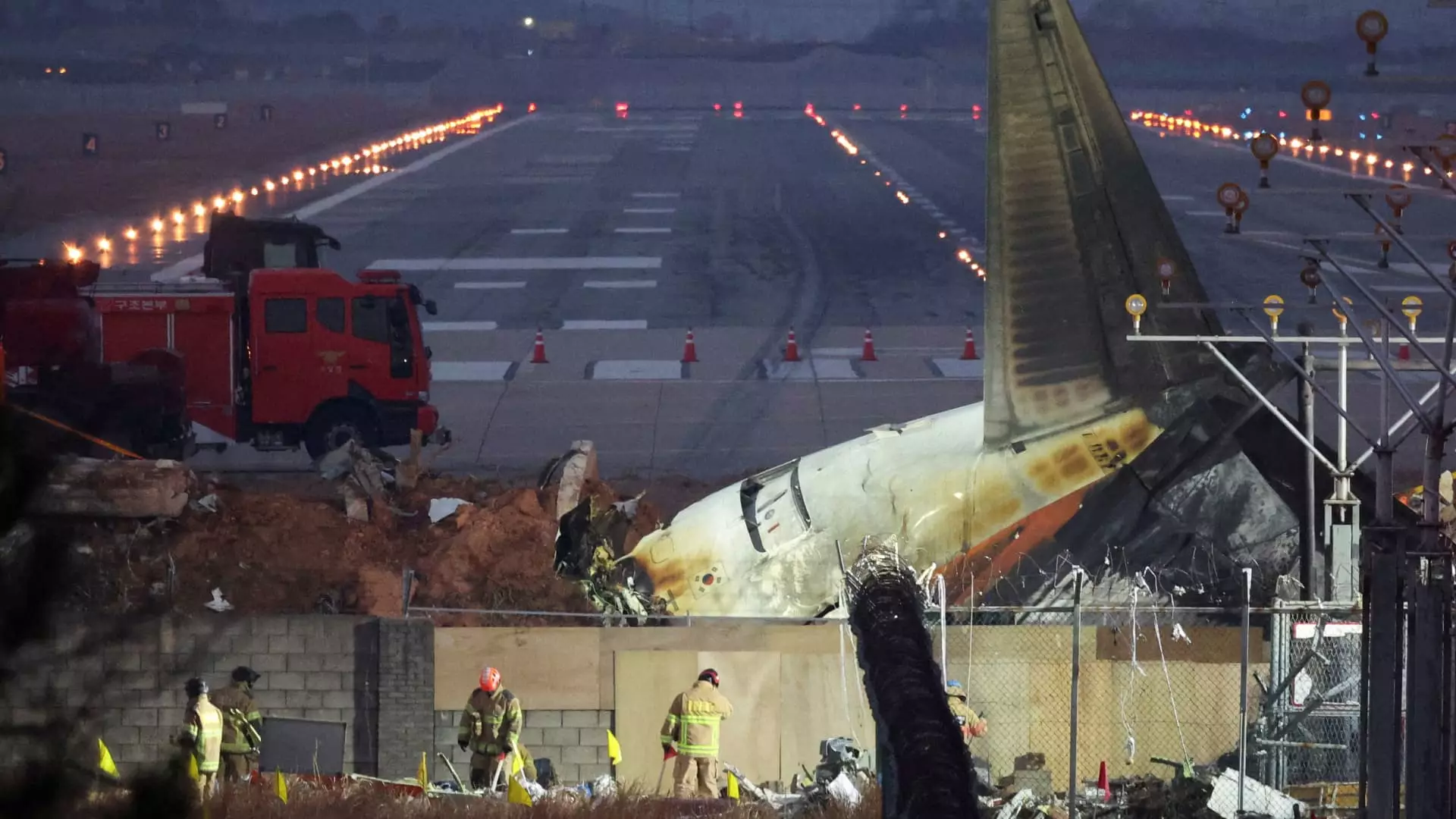The recent accident involving Jeju Air Flight 7C2216 has sent shockwaves through the aviation community, revealing not only critical flaws within operational practices but also deeply concerning aspects of airport design. This tragic incident occurred when the Boeing 737-800 collided with a mound of dirt and a concrete barrier at the end of the runway during what should have been a routine landing. Of the 181 souls aboard, only two survived, prompting an urgent examination of both the aircraft and the airport’s safety protocols.
The positioning of obstacles beyond the runway is a vital consideration in airport design; however, the specific barriers encountered by Flight 7C2216 have sparked criticism among aviation experts. Designing a smooth transition from the runway to associated safety zones is crucial to mitigate the effects of landing mishaps. Unlike airports that utilize engineered material arresting systems (EMAS) that effectively decelerate overshooting aircraft, the barriers at the runway’s end in this incident were identified as non-frangible, lacking the ability to shatter upon impact. This aspect has become a focal point for both experts and investigators as they ponder whether different design choices could have reduced the casualties.
Investigation Roadmap
As the investigation unfolds, numerous angles will be scrutinized. Initial reports indicate a potential bird strike might have led to an engine failure, highlighting the need for an exhaustive assessment of factors such as aircraft maintenance history, pilot fatigue, and operational procedures on the night of the accident. Investigators have a demanding task ahead, and given the intricacies involved, it could take months to compile a definitive report, as they must sift through extensive data, including cockpit voice recordings and mechanical logs.
While it is vital to understand the direct causes, equal attention must be paid to systemic issues that could have influenced safety measures at the airport. The fact that the structural integrity of the runway’s end barrier has emerged as a point of contention raises questions about how such designs are regulated and maintained across similar airports.
The lessons from this tragic accident extend beyond immediate design flaws. Other airports, including LaGuardia, have incorporated successful strategies to prevent accidents similar to the one experienced by Jeju Air. The implementation of EMAS and similar initiatives can significantly reduce the risk of severe injuries and fatalities during landing mishaps. It is crucial that stakeholders in aviation policy and airport infrastructure draw from this incident to enact meaningful changes that prioritize passenger safety.
The devastating event involving Flight 7C2216 serves as a stark reminder of the delicate interplay between aircraft operation and airport design. The aviation community must focus not only on the incident itself but also on creating a safer future by reevaluating design protocols and embracing innovations that protect lives in vulnerable moments.

Leave a Reply